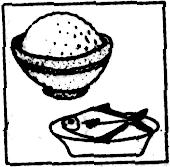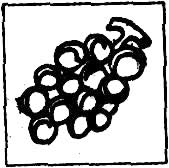| Lookandchoose. 根据图片,选择正确的问句。( )1.— ? —Riceandfish. A. Whatareyoudoing'? B.Doyoulikewater? C.What'sforsupper?( )2. — ? —Yes,Iwouldlikes-五年级英语 |
|
[db:作者] 2019-08-31 00:00:00 零零社区 |
|
|
题文
| Look and choose. 根据图片,选择正确的问句。 |
( )1.— ? —Rice and fish.
A. What are you doing'?
B. Do you like water?
C. What's for supper?
( )2. — ? —Yes, I would like some grapes.
A. What about some meat?
B. Do you like vegetables?
C. Would you like some fruit?
( )3. — ? —He is brushing his teeth.
A. Do you like Danny?
B. Is Danny a boy?
C. What is Danny doing? |


 |
题型:单选题 难度:中档
答案
据专家权威分析,试题“Lookandchoose. 根据图片,选择正确的问句。( )1.— ? —Ricean..”主要考查你对 特殊疑问句,现在进行时,现在分词,一般疑问句,固定搭配 等考点的理解。关于这些考点的“档案”如下:
特殊疑问句现在进行时,现在分词一般疑问句固定搭配
考点名称:特殊疑问句 考点名称:现在进行时,现在分词 考点名称:一般疑问句 考点名称:固定搭配
|
|
http://www.00-edu.com/ks/4/1/66/2019-09-01/1333709.html十二生肖十二星座
|

